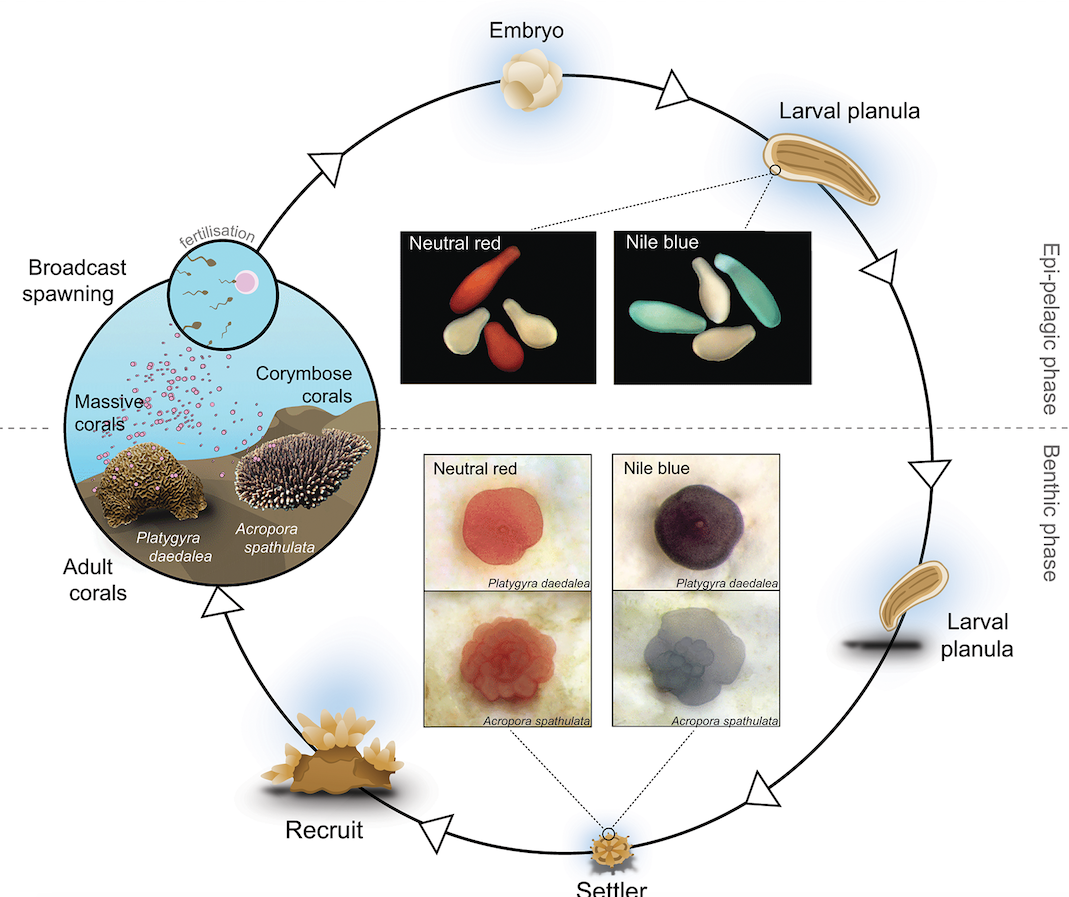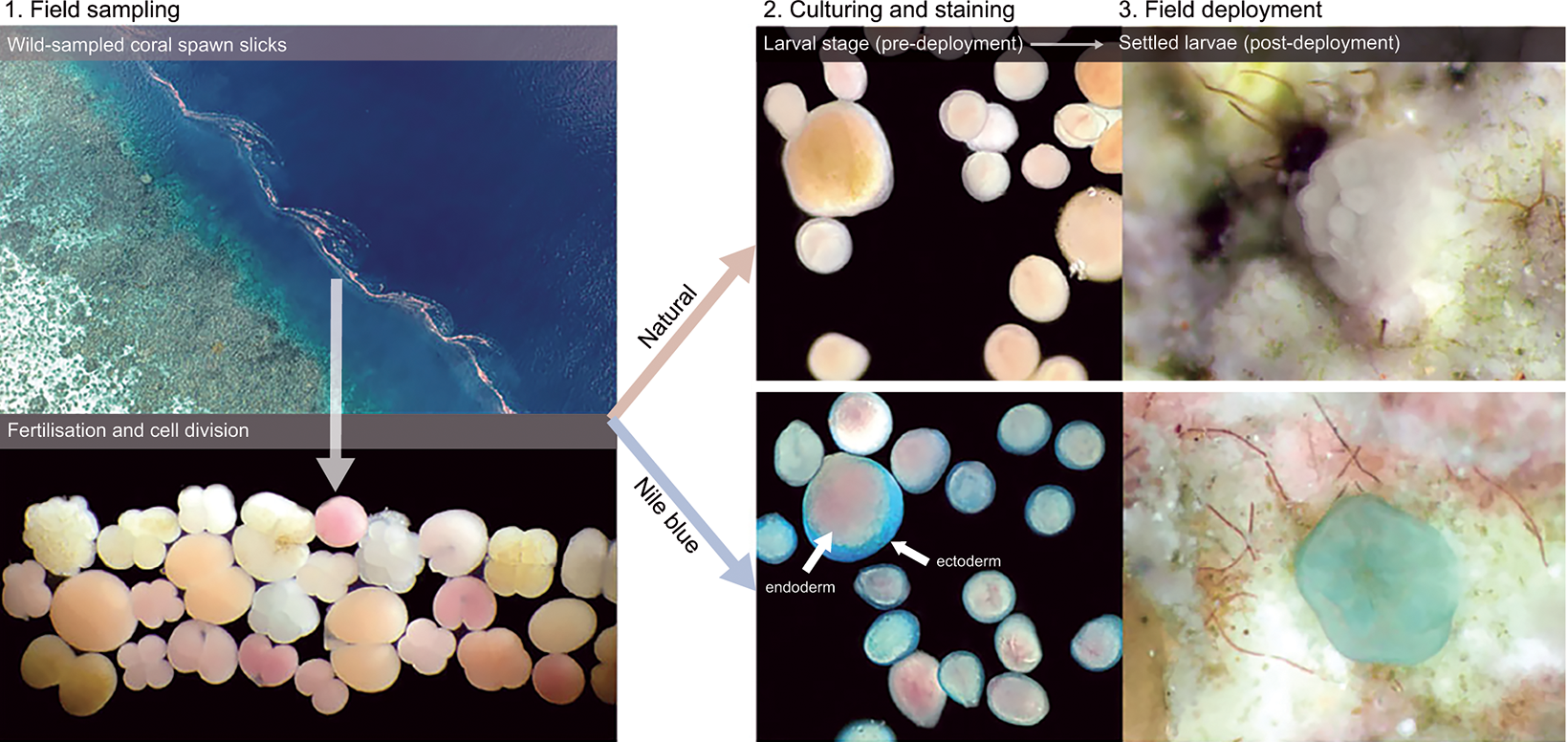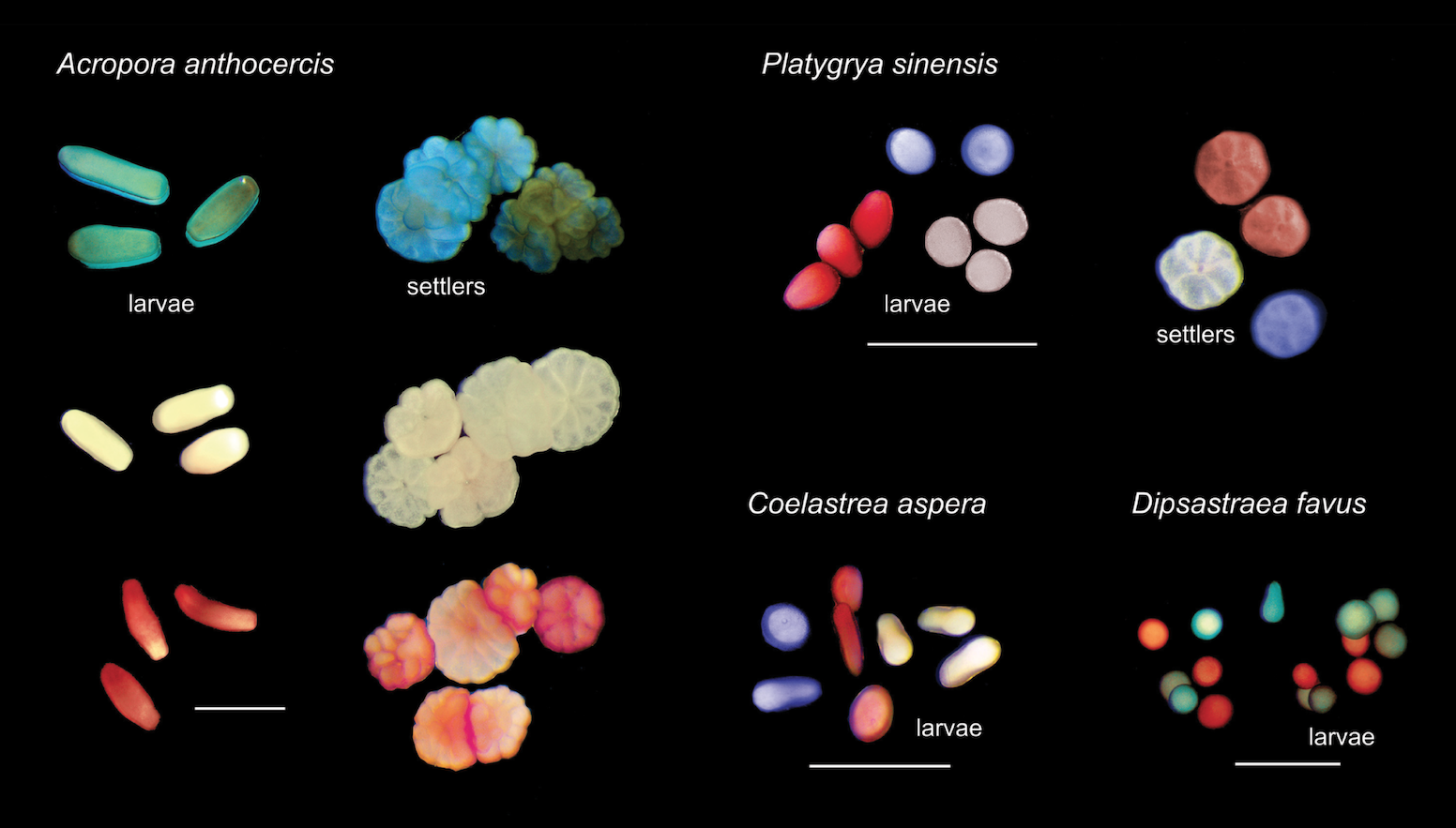Researchers have used a harmless dye to stain coral spawn and track its dispersal and settlement on the reef. Christopher Doropoulos and George Roff of CSIRO Oceans & Atmosphere, Australia, developed the low-cost technique to provide a quick, simple, and non-toxic approach to studying dispersal in large numbers of coral larvae.
The pair collected nearly 3000 larvae from lab-reared Acropora spathulata and Platygyra daedalea and tested incubating them with one of four colored dyes at different concentrations. They found that two dyes – neutral red and Nile blue – successfully stained the larvae while having minimal impact on their survival and settlement. They then tested the technique on a further four coral species with a 98% success rate.

One Dollar price tag
Field tests followed and eggs were captured from wild spawning corals on the Great Barrier Reef. 10,000 larvae were then stained with Nile Blue dye, and released into Lizard Island lagoon where their settlement was traced and recorded on tiles placed around the lagoon. The best thing about the technique is the price, with the duo claiming that 100,000 larvae could be stained for the cost of just one US dollar. Nile blue is a fluorescent dye used in Biology and histology to stain parts of cells.
Different color dyes could be used to differentiate between groups or species, making the method applicable to conservation planning, behavioral ecology, and reef restoration experiments in both laboratory and field studies, according to the authors.
“We have developed a novel method for coloring large numbers of coral larvae (millions to billions), Christopher Doropoulos told Science Magazine. Our method allows for immediate differentiation and visual tracking of coral larvae from dispersal to settlement, and will facilitate a wide range of de novo studies of larval behavior and ecology.”
The peer-reviewed paper has been published in the Journal PLOS Biology.




